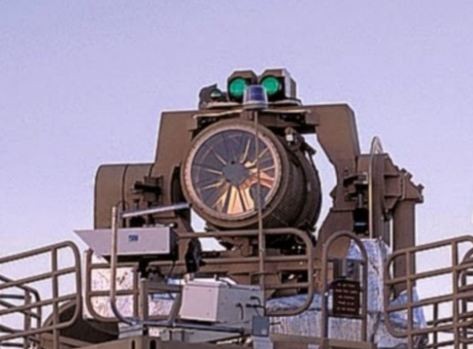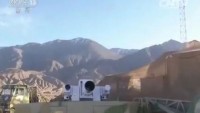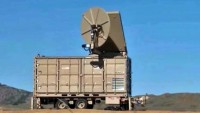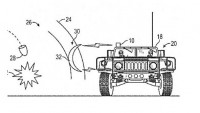New ‘Energy Magazines’ will Allow Combat Lasers aboard US Navy Warships to Destroy Targets Non-Stop
| Arthur Dominic Villasanta | | Jan 25, 2017 05:44 AM EST |
(Photo : US Navy) The Laser Weapon system or LaWS being tested aboard the USS Ponce.
The U.S. Navy is developing an "energy magazine" that will allow the 150 kilowatt high-energy lasers to be mounted aboard most of its surface warships to fire non-stop while simultaneously engaging both aerial and maritime targets.
The "energy magazine" can be considered analogous to the magazine on an assault rifle, but instead of storing rifle rounds, an energy magazine stores the energy needed to fire the laser almost non-stop. The energy magazine solves the problem of the laser having to stop firing while its batteries recharge.
Like Us on Facebook
Also, older warships can't generate enough electrical power to sustain combat lasers in a battle.
The energy magazine stores energy for on-demand usage by the laser, said the Navy. It can consist of batteries, capacitors or flywheels, and will recharge between laser pulses.
The energy magazine allows for sustained combat against a swarm of targets in an engagement lasting up to 20 minutes.
The Navy and its contractors are also working on the next iteration: energy magazines that charge as fast as they discharge, allowing for Almost indefinite use.
One of these contractors revealed the magazines they're developing have enough stored power to fire over 100 shots before recharging. This particular system uses lithium ion battery modules housed in cabinets that can provide 930 kW of power.
A demonstration of the magazine aboard a Navy warship is scheduled for 2018. The magazine will power a 150 kW laser being developed by Northrop Grumman for the Office of Naval Research.
The magazine can also be use by the U.S. Army and U.S. Air Force.
The Air Force is an avid supporter of laser weapons and will soon test a laser mounted aboard one of its test aircraft.
A Lockheed AC-130W Stinger II gunship belonging to the U.S. Air Force Special Operations Command (AFSOC) will test the military's first solid state laser mounted aboard a combat aircraft this year.
The laser cannon will occupy the 30 mm cannon position forward of the wing where airflow is less disturbed. AFSOC wants to either install a 60 kW or a 120 kW solid state laser to be used for knocking-out stationary vehicles, aircraft and fixed communications sites such as radio towers.
The Air Force will first test the laser weapons on larger aircraft such as the AC-130 and C-17 Globemaster until miniaturization allows these powerful weapons to be mounted on fighter jets such as the F-15 Eagle, F-16 Fighting Falcon, F-22 Raptor and the F-35.
TagsU.S. Navy, energy magazine, 150 kilowatt high-energy laser, AC-130W Stinger II gunship, laser, combat laser
©2015 Chinatopix All rights reserved. Do not reproduce without permission
EDITOR'S PICKS
-

Did the Trump administration just announce plans for a trade war with ‘hostile’ China and Russia?
-

US Senate passes Taiwan travel bill slammed by China
-

As Yan Sihong’s family grieves, here are other Chinese students who went missing abroad. Some have never been found
-

Beijing blasts Western critics who ‘smear China’ with the term sharp power
-

China Envoy Seeks to Defuse Tensions With U.S. as a Trade War Brews
-

Singapore's Deputy PM Provides Bitcoin Vote of Confidence Amid China's Blanket Bans
-

China warns investors over risks in overseas virtual currency trading
-

Chinese government most trustworthy: survey
-

Kashima Antlers On Course For Back-To-Back Titles
MOST POPULAR
LATEST NEWS
Zhou Yongkang: China's Former Security Chief Sentenced to Life in Prison

China's former Chief of the Ministry of Public Security, Zhou Yongkang, has been given a life sentence after he was found guilty of abusing his office, bribery and deliberately ... Full Article
TRENDING STORY

China Pork Prices Expected to Stabilize As The Supplies Recover

Elephone P9000 Smartphone is now on Sale on Amazon India

There's a Big Chance Cliffhangers Won't Still Be Resolved When Grey's Anatomy Season 13 Returns

Supreme Court Ruled on Samsung vs Apple Dispute for Patent Infringement

Microsoft Surface Pro 5 Rumors and Release Date: What is the Latest?














